| 62 images 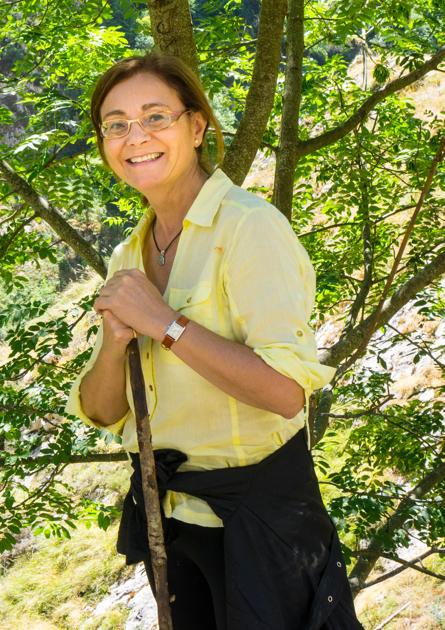 After our brief stay at Brockley in the West Country of England, Joan and Bill, together with Ant & Con Ridge, flew to Spain, where we were met by our friend and tour guide Lucía Tabares (left), native of Seville, and scientific colleague of Bill. Lucía made everything work, and her blend of selected activities, flexibility, new and unknown excursions, occasionally getting us lost in tiny villages created a trip of a lifetime for us.
After our brief stay at Brockley in the West Country of England, Joan and Bill, together with Ant & Con Ridge, flew to Spain, where we were met by our friend and tour guide Lucía Tabares (left), native of Seville, and scientific colleague of Bill. Lucía made everything work, and her blend of selected activities, flexibility, new and unknown excursions, occasionally getting us lost in tiny villages created a trip of a lifetime for us.
Some technical issues: We met up in Bilbao, in the Basque Country, but spent most of our time in Asturias, just to the west. We had two rental cars. We stayed mostly in two- and three- star hotels, which were without exception clean, comfortable, and usually quiet. We ate delicious local food - a typical dinner of two courses, plus wine, water, and bread, cost about $15. Now, a little bit about Asturias, in four brief lessons. We saw evidence of all of these things on our trip. 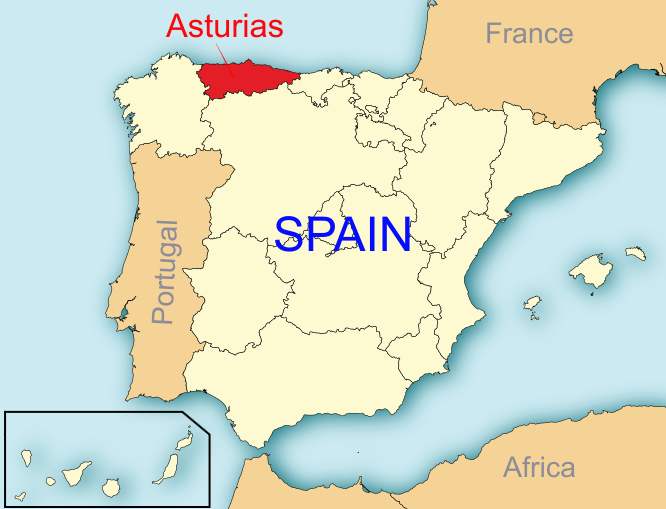 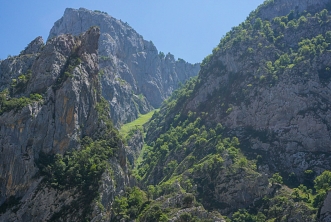 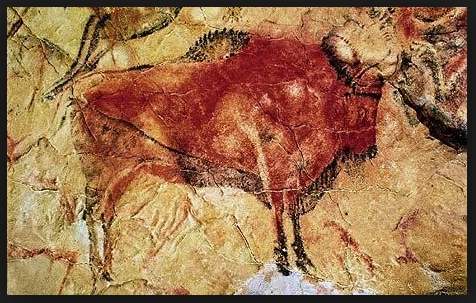 3. Deep Human history: We visited Altamira, which like its sister cave in France (Lascaux), has provided a wealth of fascinating information about the early inhabitants of Asturias - about twenty thousand years ago. The actual caves are closed (to protect them and their exquisite paintings - right) to most visitors, but a full-scale replica has been built, and the big attached museum houses many artifacts and displays of interest to all - from children to professional historians. 3. Deep Human history: We visited Altamira, which like its sister cave in France (Lascaux), has provided a wealth of fascinating information about the early inhabitants of Asturias - about twenty thousand years ago. The actual caves are closed (to protect them and their exquisite paintings - right) to most visitors, but a full-scale replica has been built, and the big attached museum houses many artifacts and displays of interest to all - from children to professional historians.
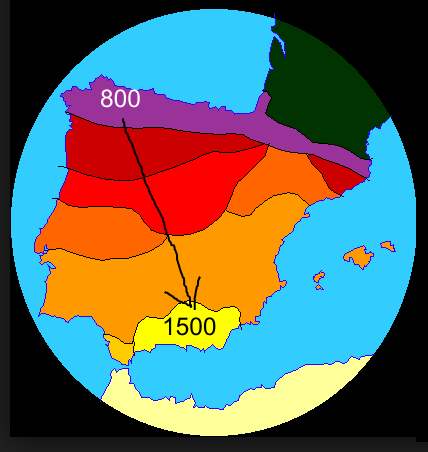 We began in Bilbao, Basque Country, walking to the Guggenheim Museum. It is sheathed in titanium, with a flower sculpture of a dog outside 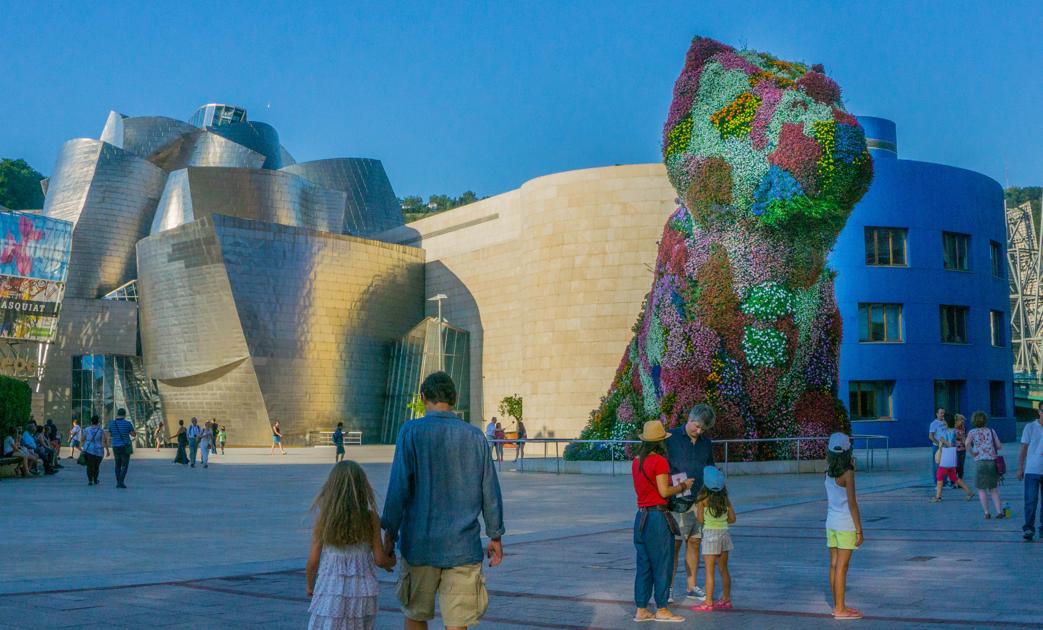 4. Bill, Lucia, Joan, Con, Ant  5. 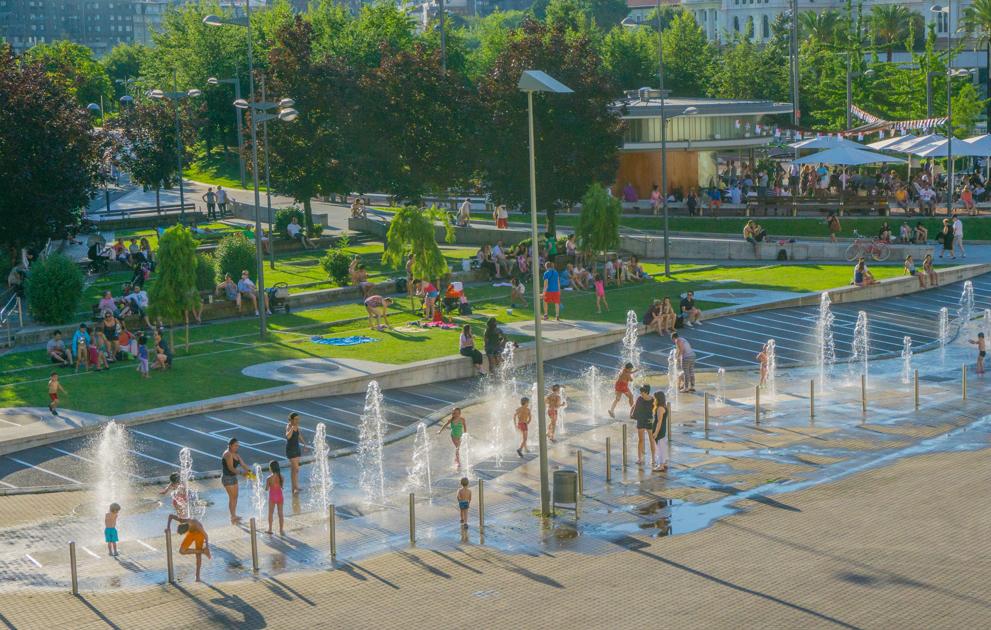 6. 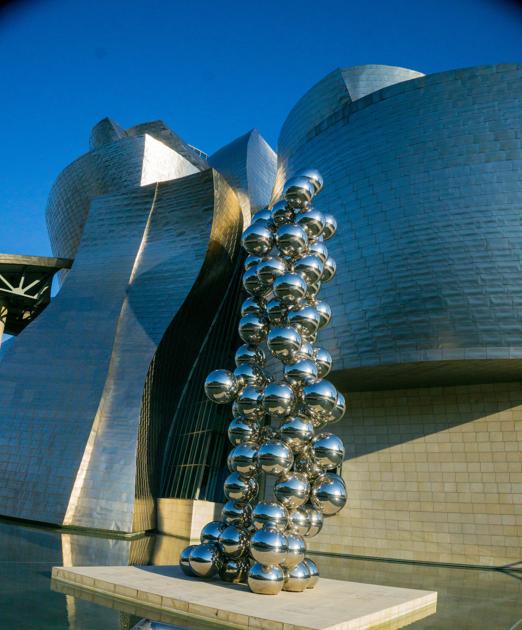 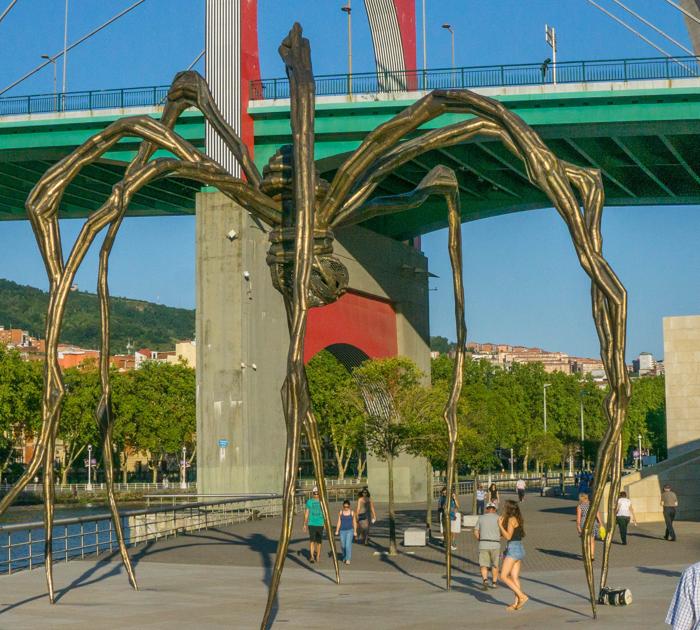 8. 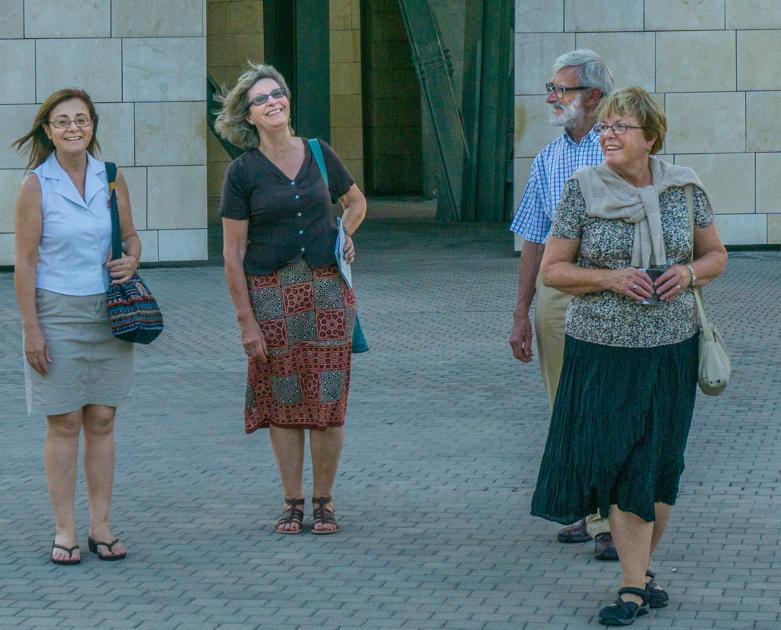 9. Ant & Con celebrated their 47th wedding anniversary 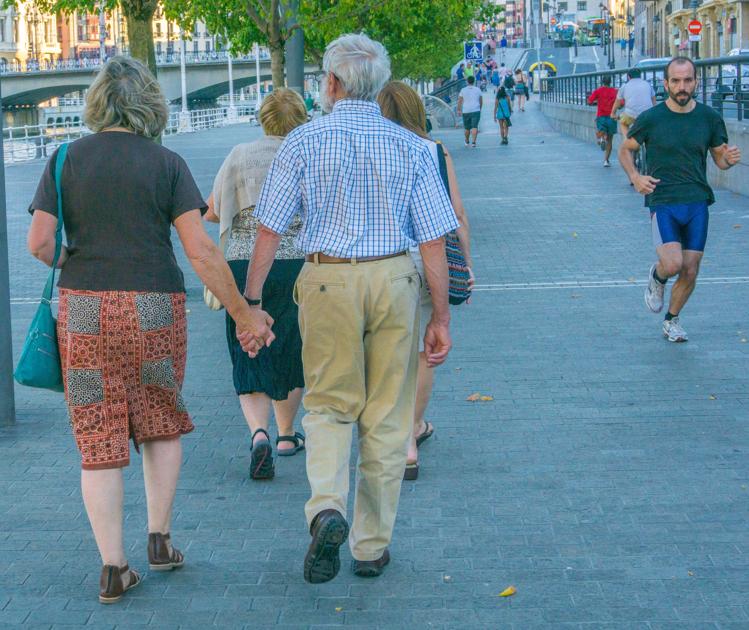 10. Bilbao at sunset 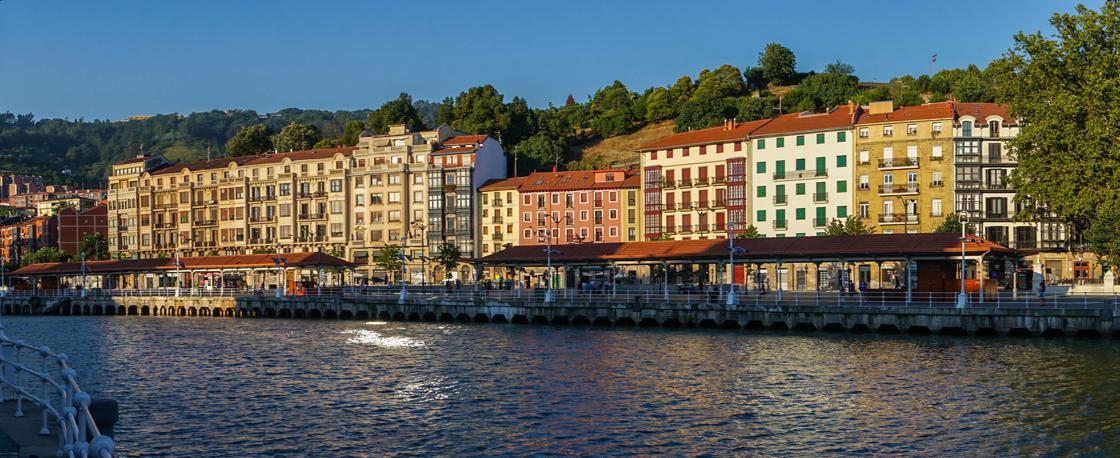 11. Bilbao 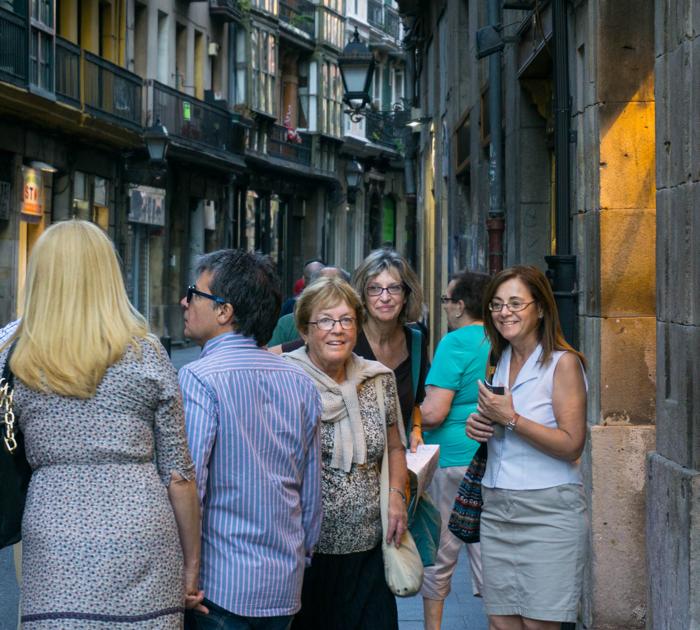 12. Pinchos (tapas) in Bilbao 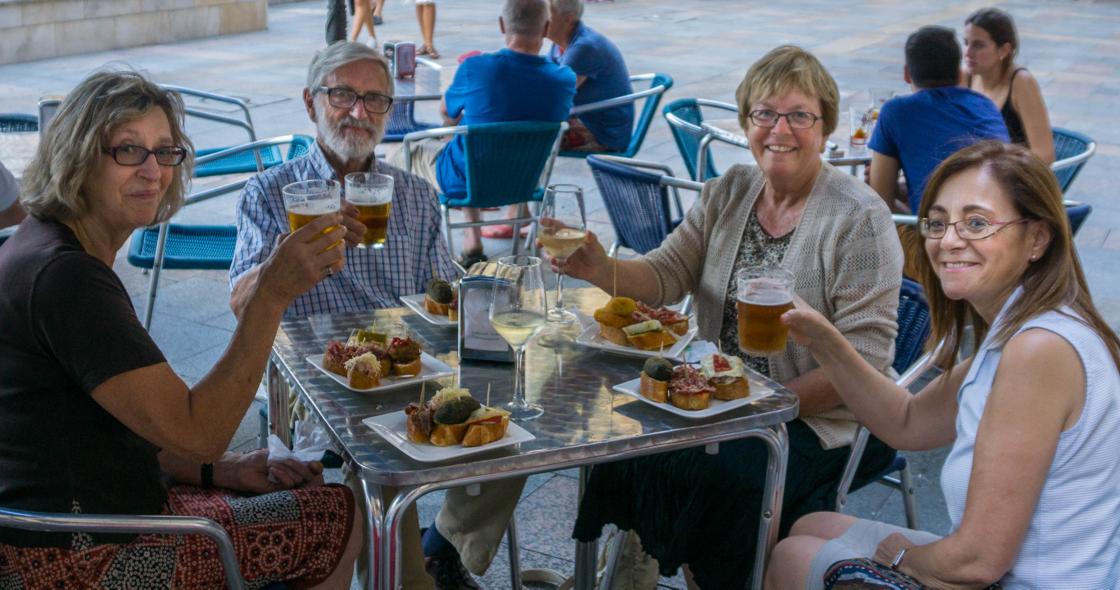 13. Day 2: Puente Vizcayo, Bilbao. It is suspended by cables attached to a tall tower that spans the river, and shuttles cars and people back and forth across the river. It's the oldest (1888) of its kind 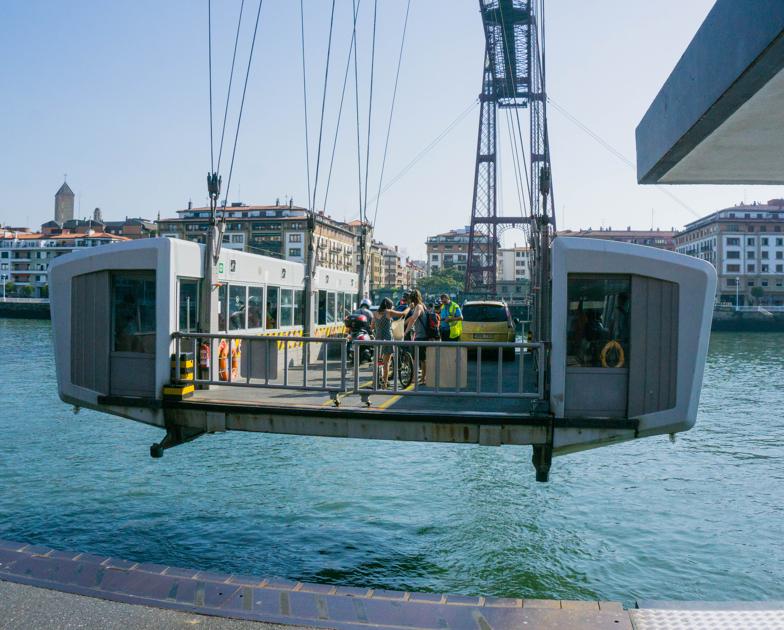 14. Lunch is a peaceful hotel garden. Lucia & Ant 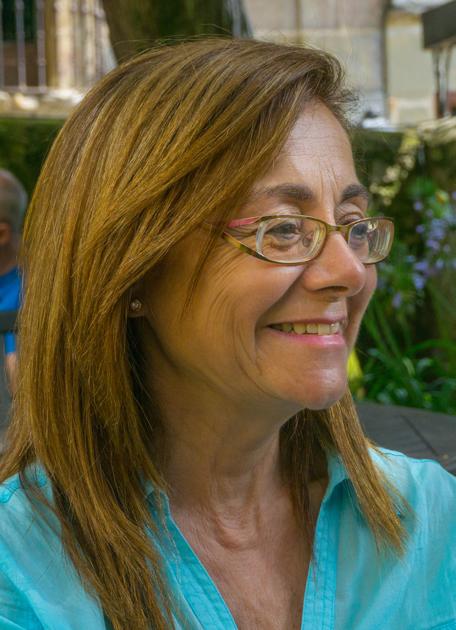 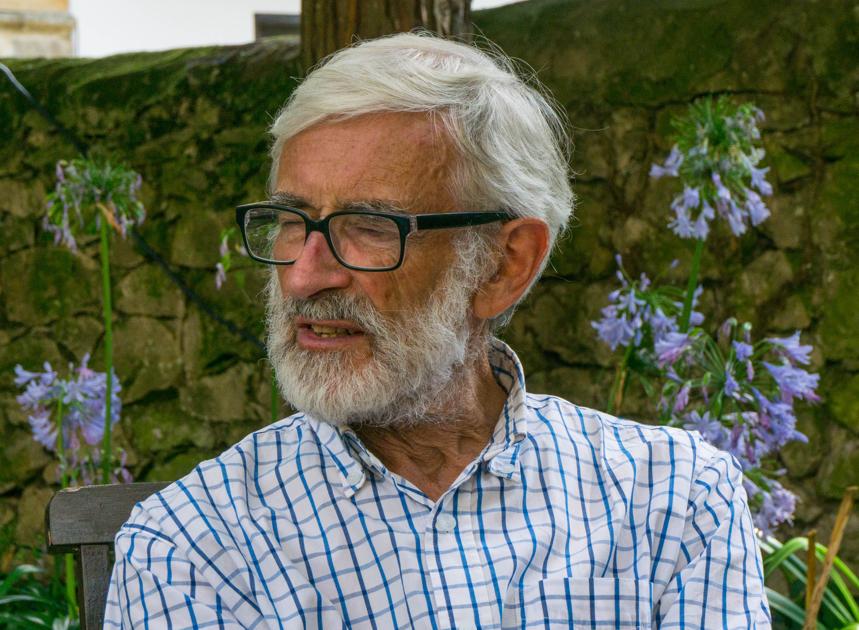 16. Con & Joan 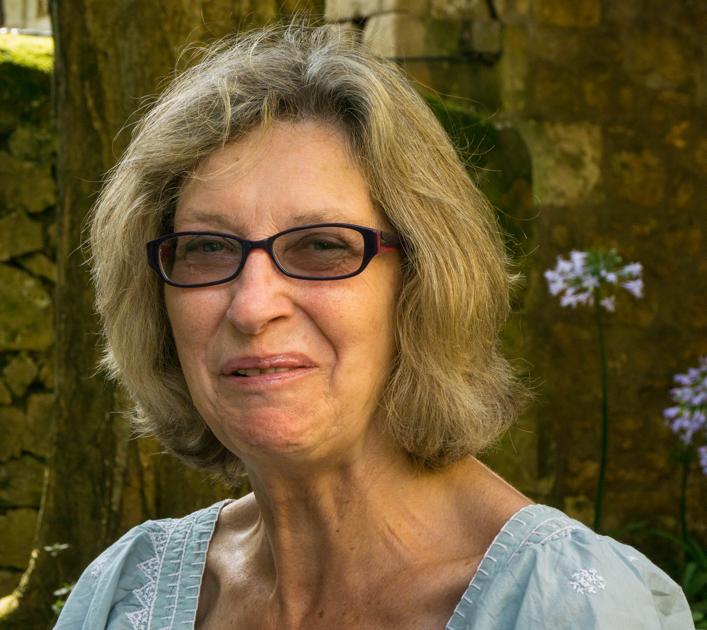 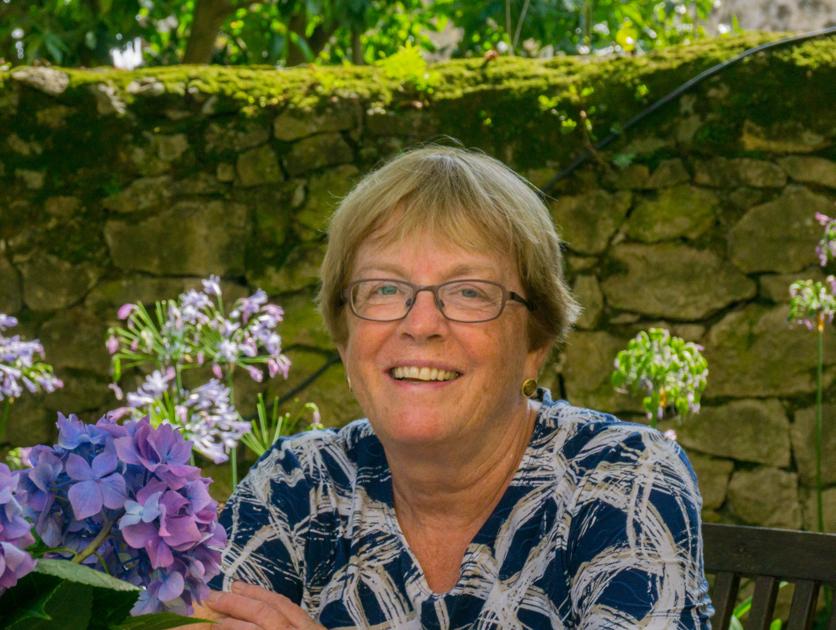 18. Santillana, Asturias 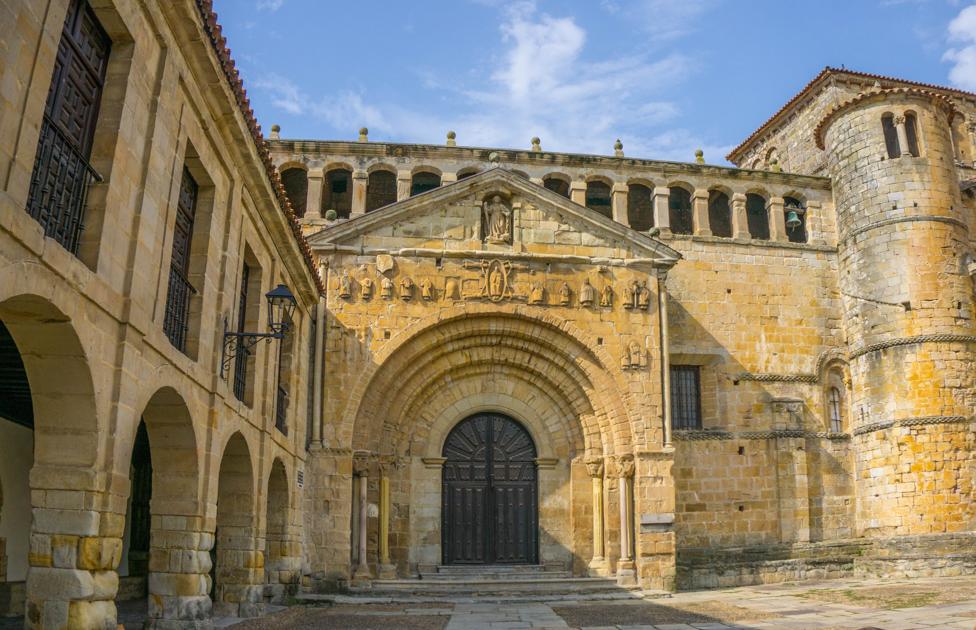 19. 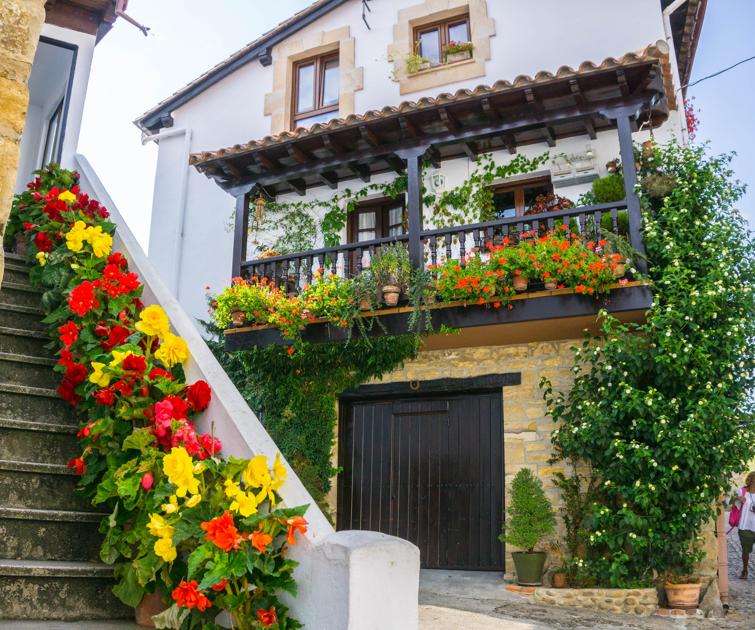 20. 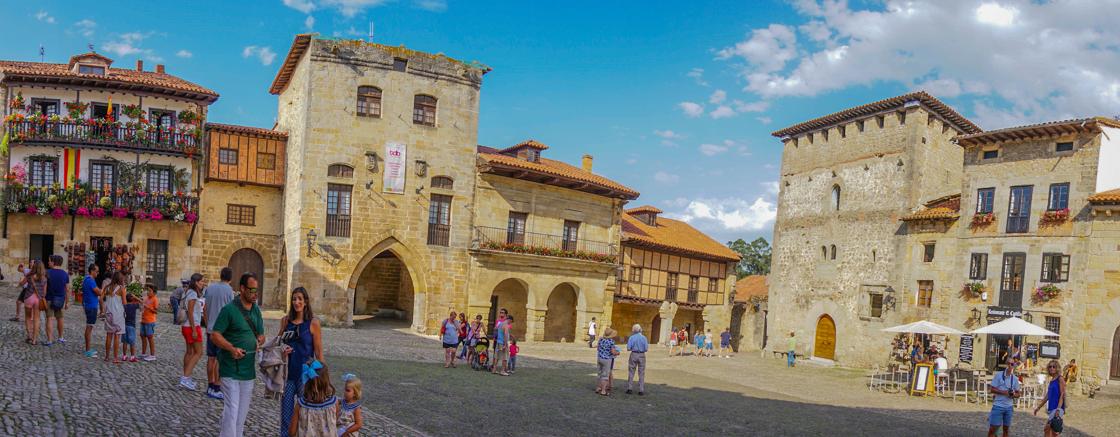 21. Our hotel in Santillana 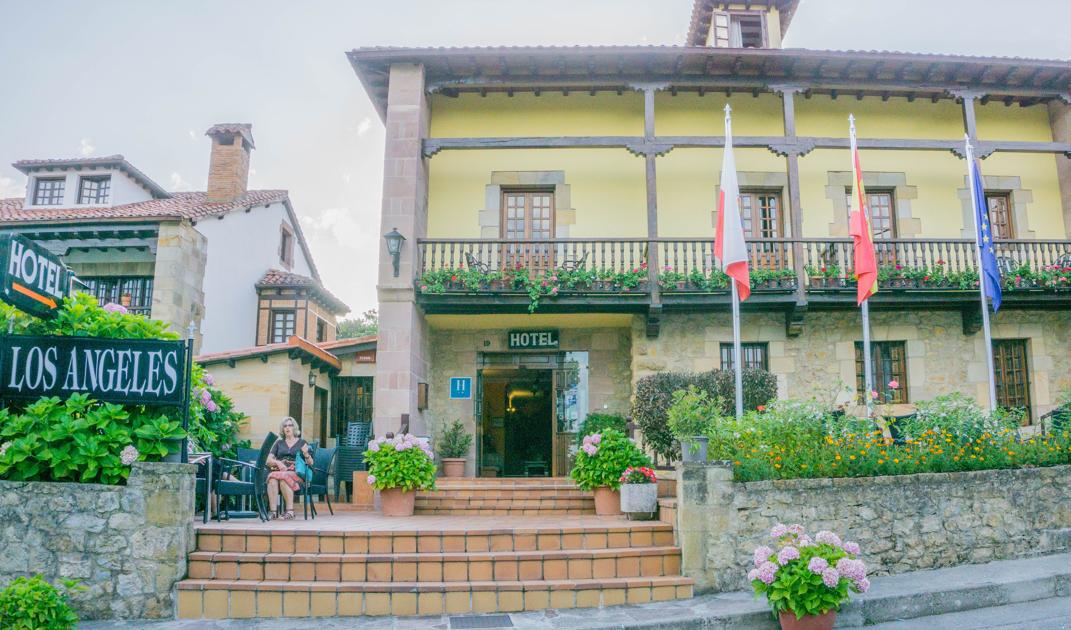 22. Altamira - they don't allow pictures in the replica cave or museum. 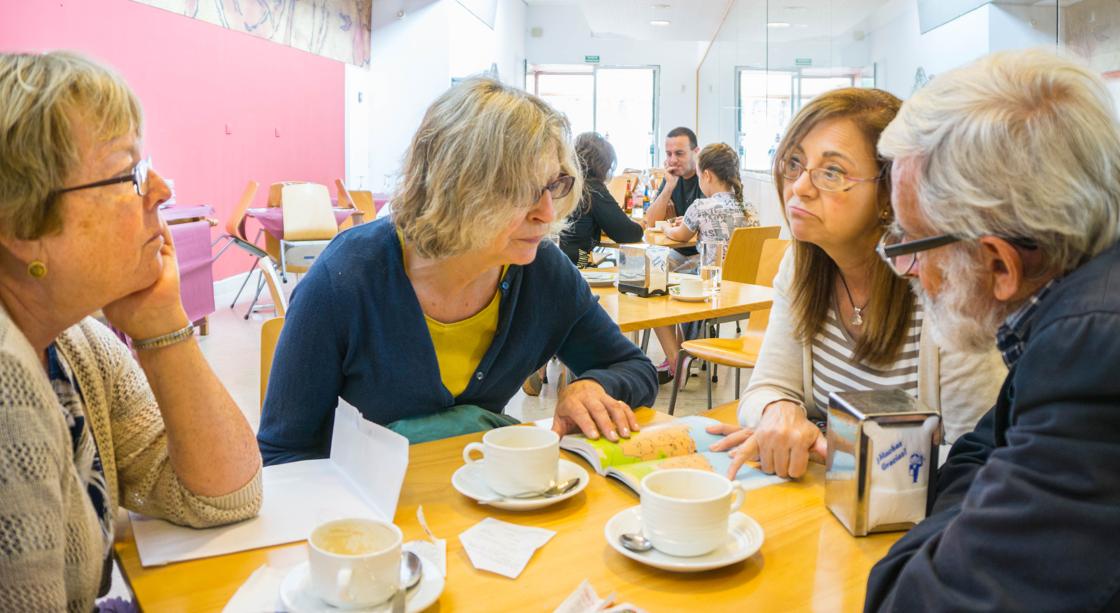 23. Market in Llanes 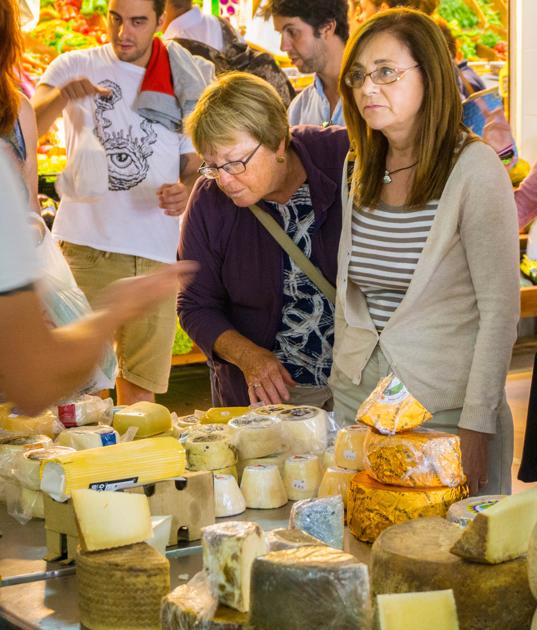 24. Llanes 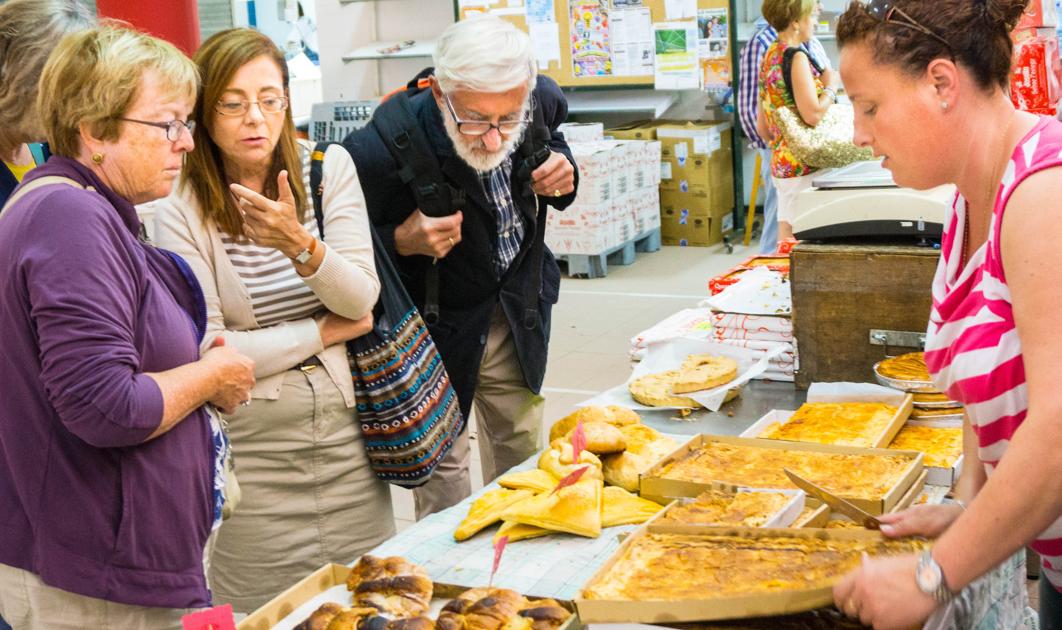 25. Lunch in Llanes 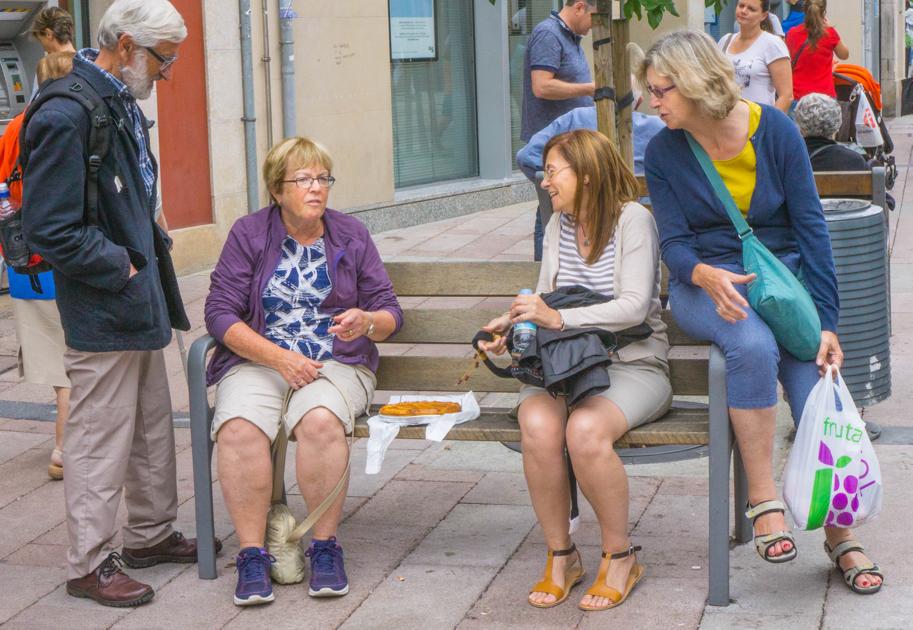 26. 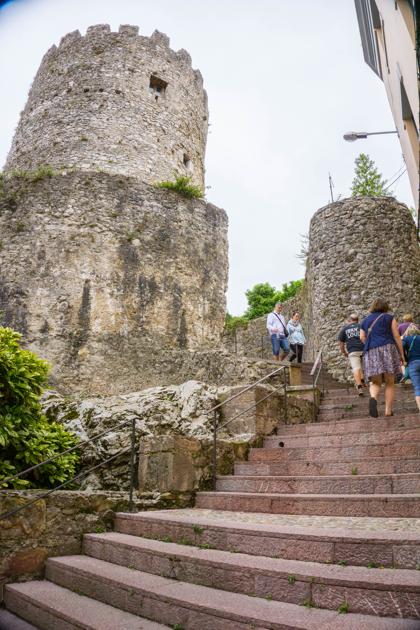 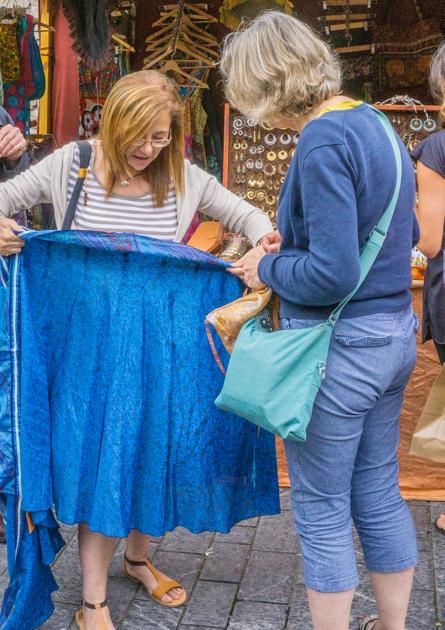 28. Llanes 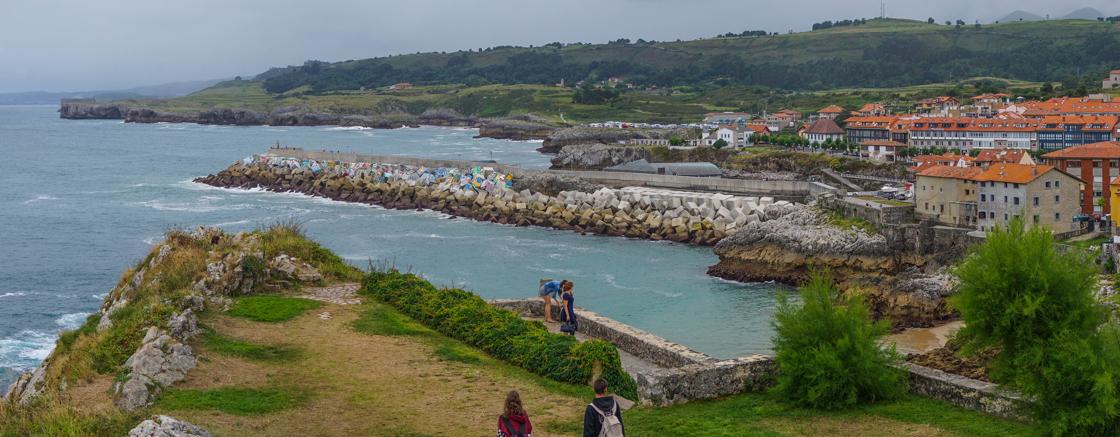 29. Llanes 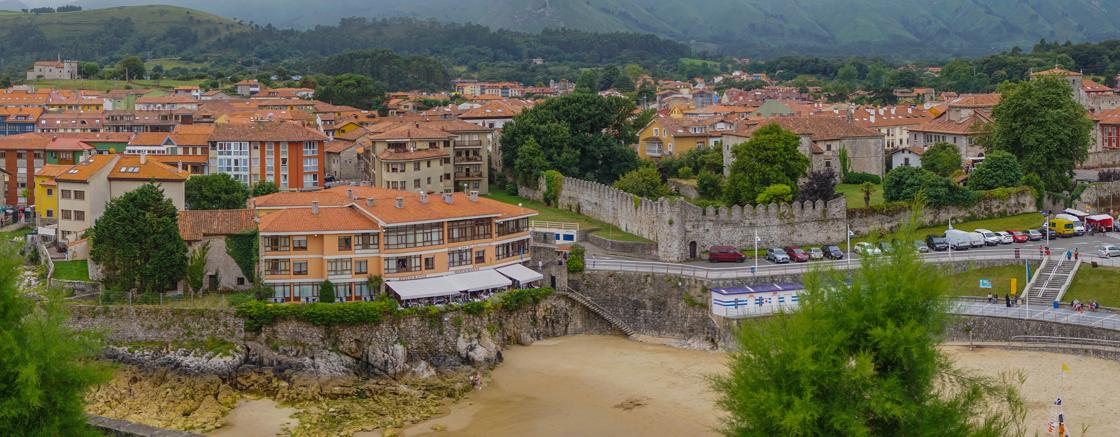 30. Llanes 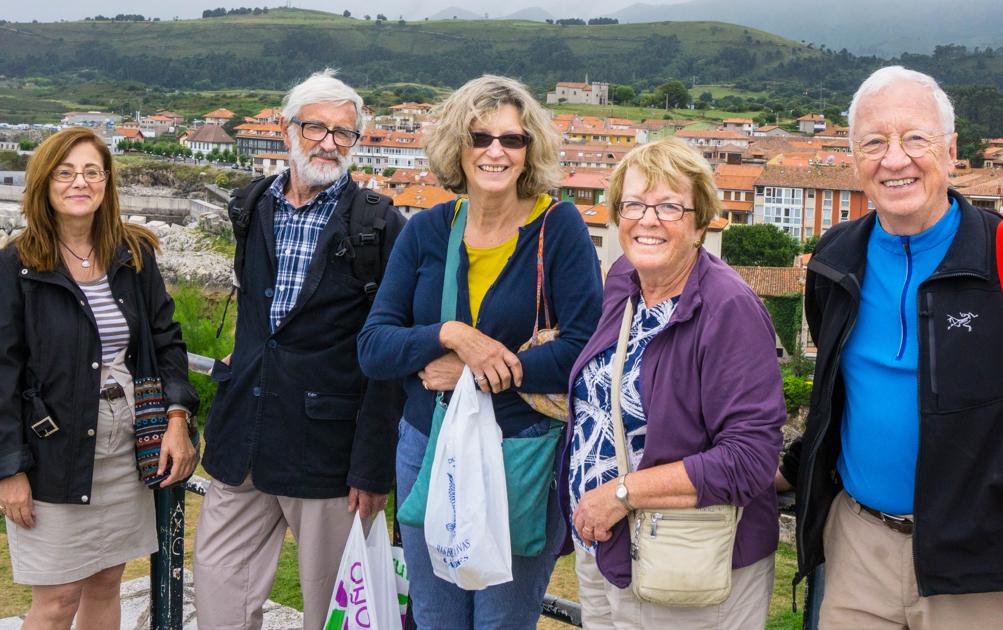 31. Key rack at our hotel in Arenas de Cabrales 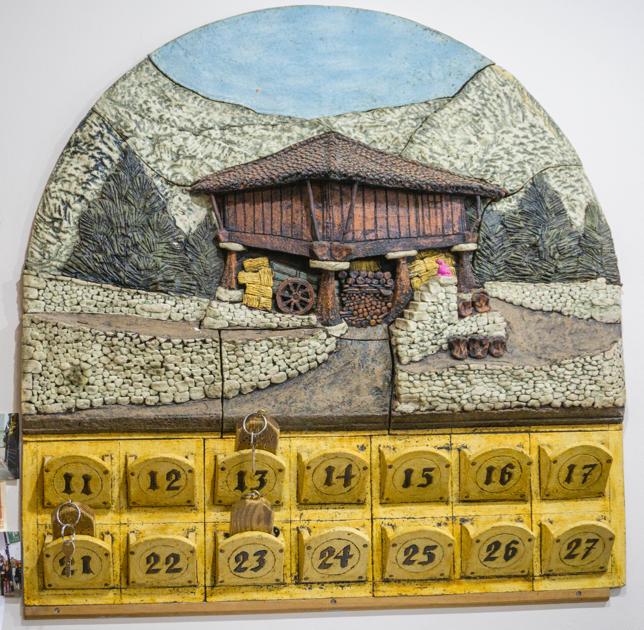 32. view from hotel room in Arenas 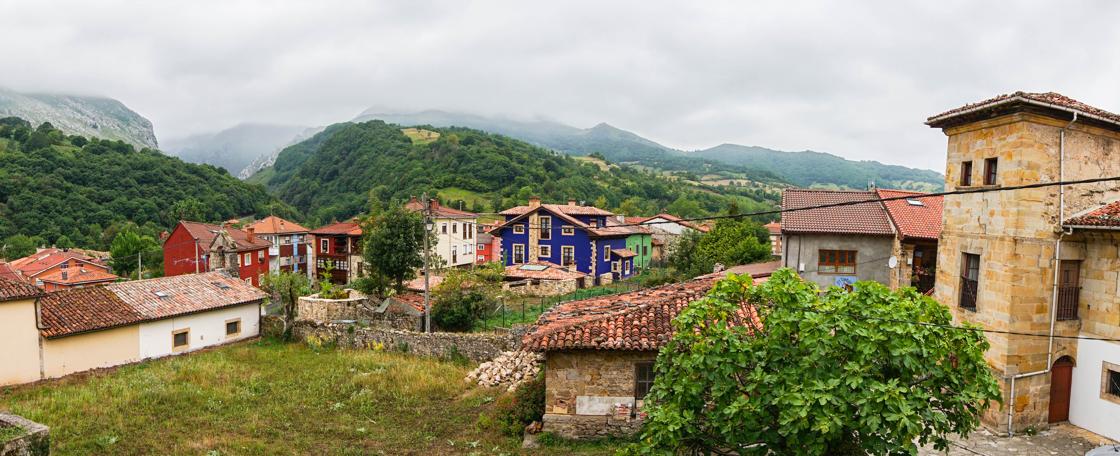 33. Arenas 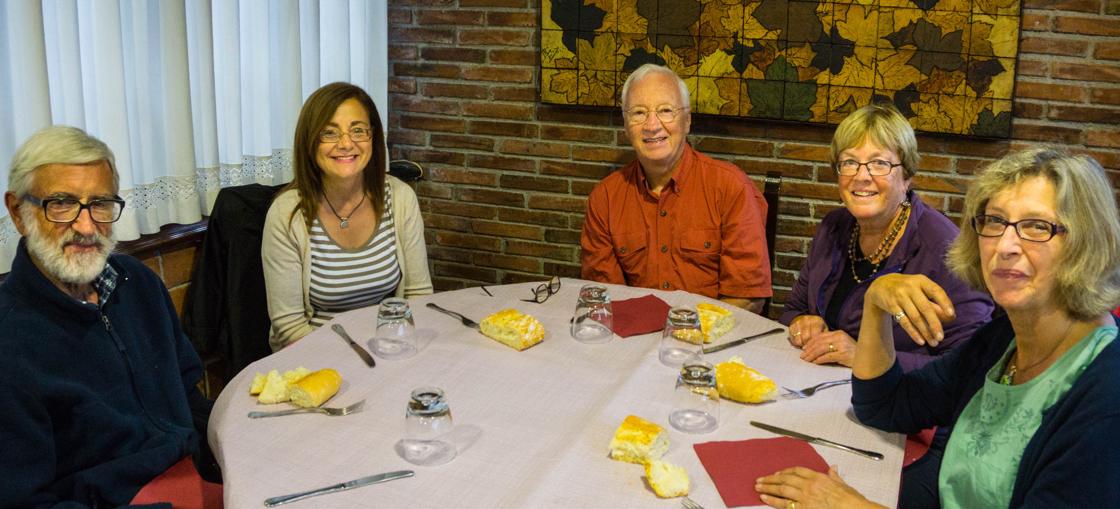 34. pasta, mushrooms, goat; fabada - traditional Asturian bean soup; ensalada 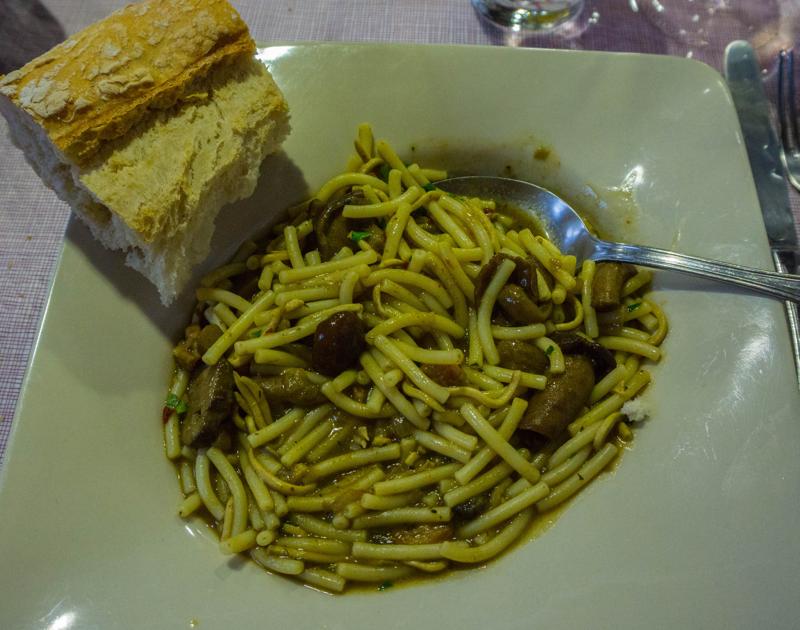 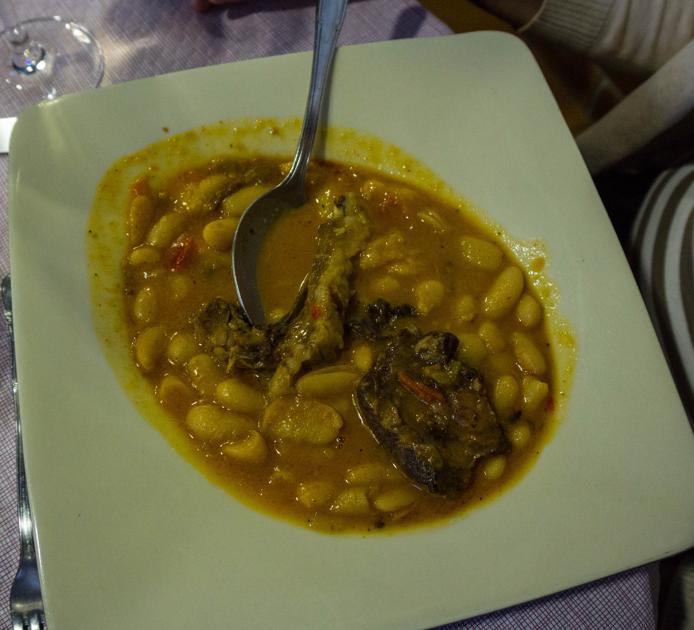 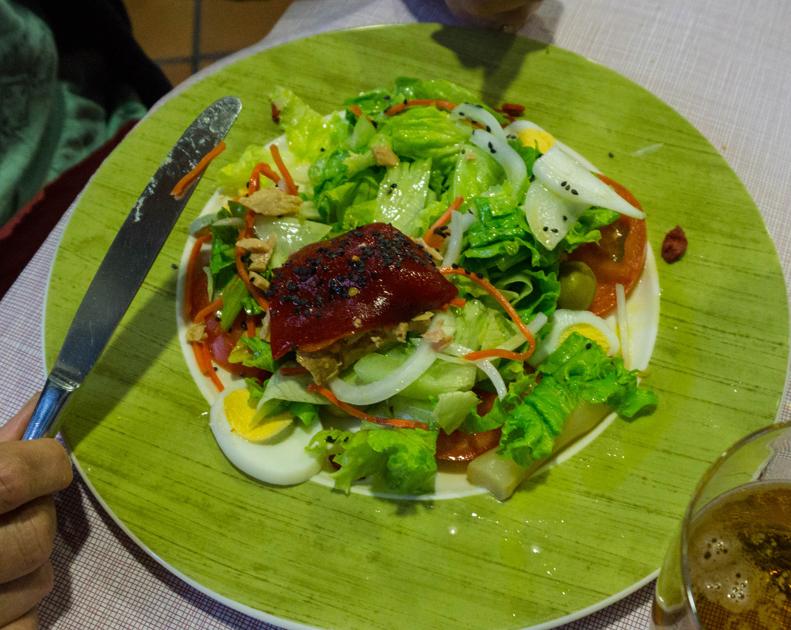 37. salmon; stuffed peppers with Asturian cheese; lomo 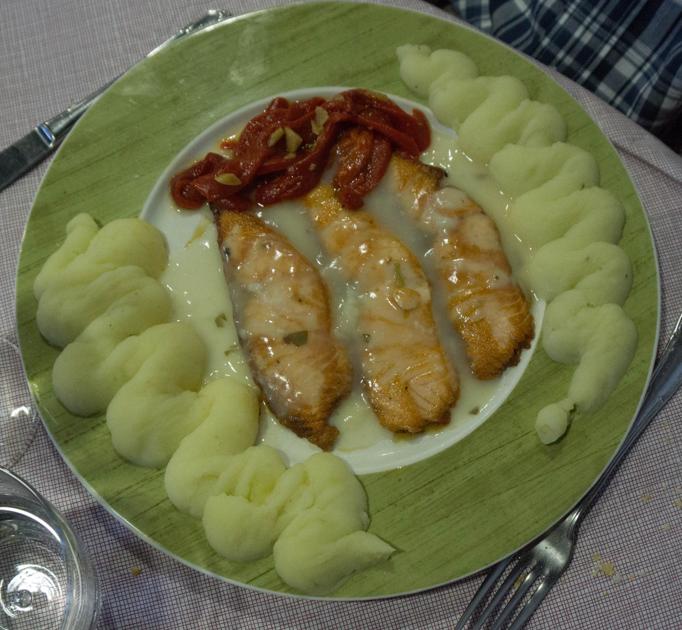 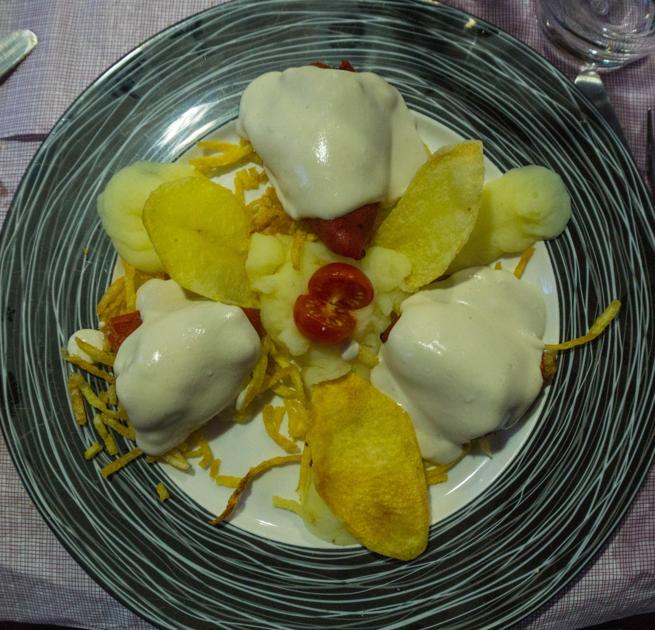 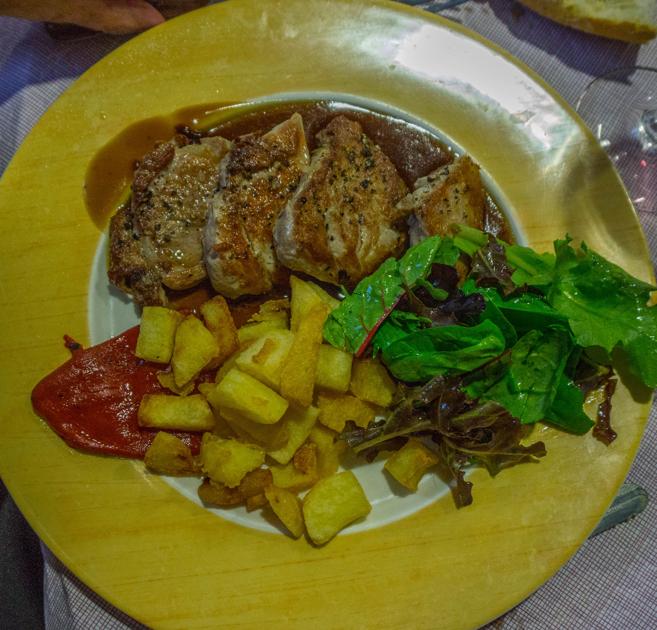 41. Steep terrain near Poncebon 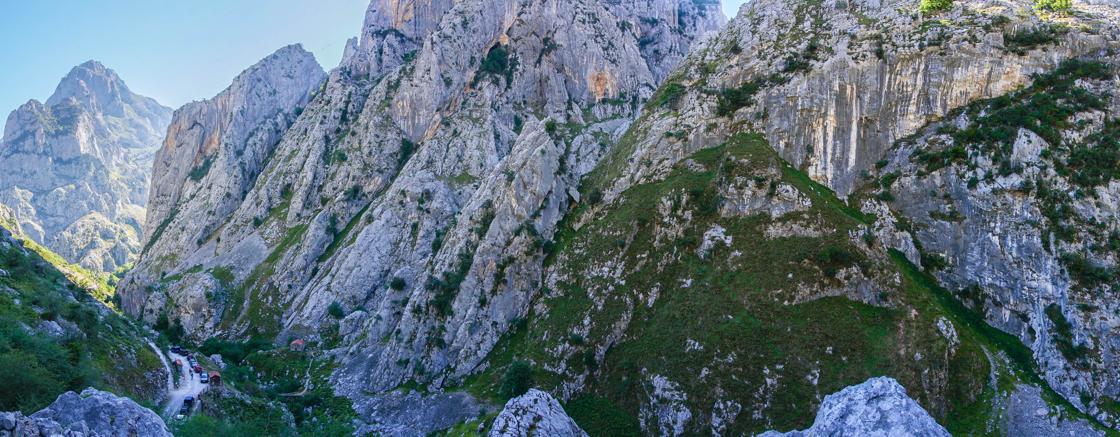 42. Our big hike - Ruta del Cares (route along the Cares River) 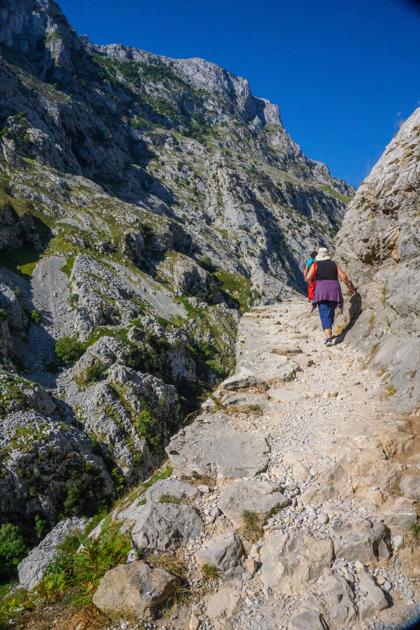 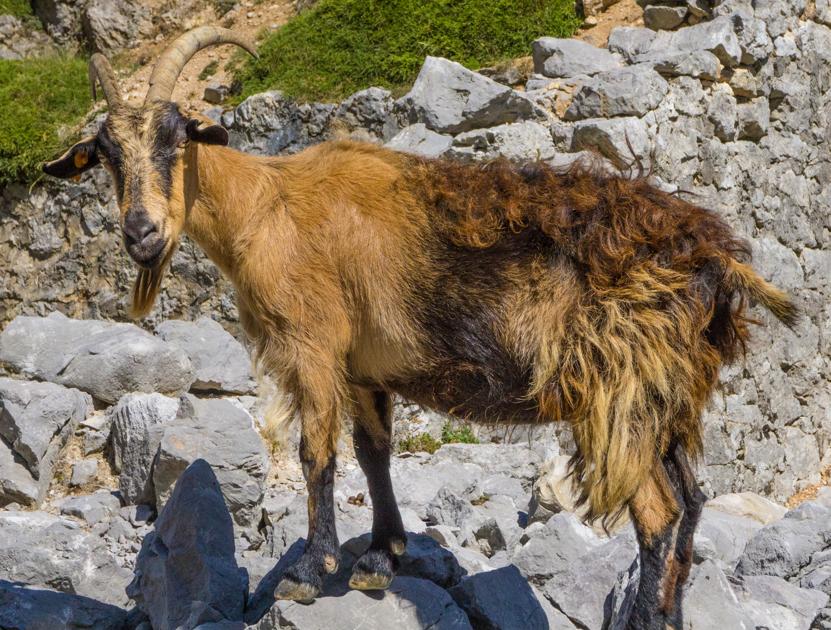 44. 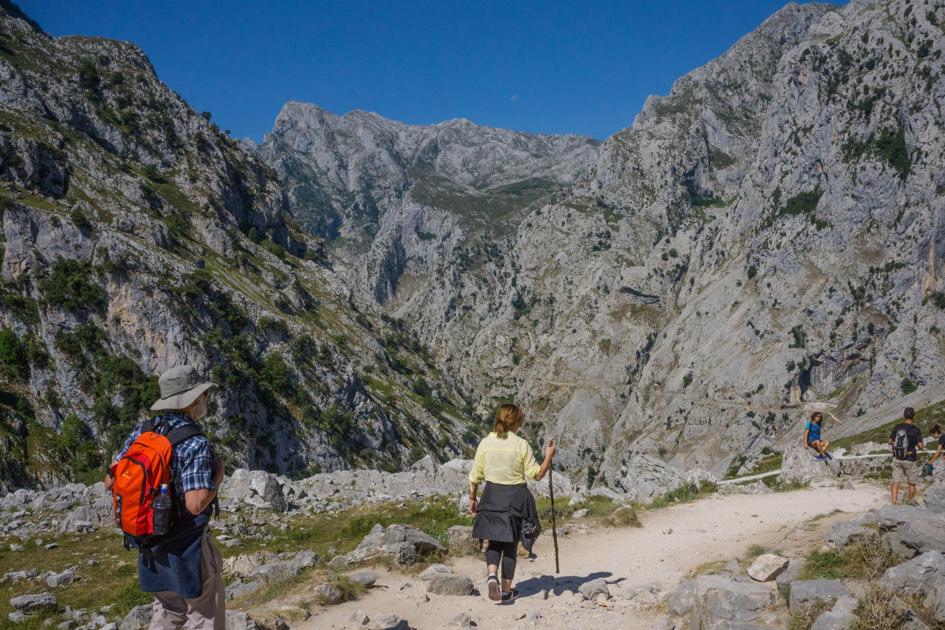 45. The trail was made about 70 years ago 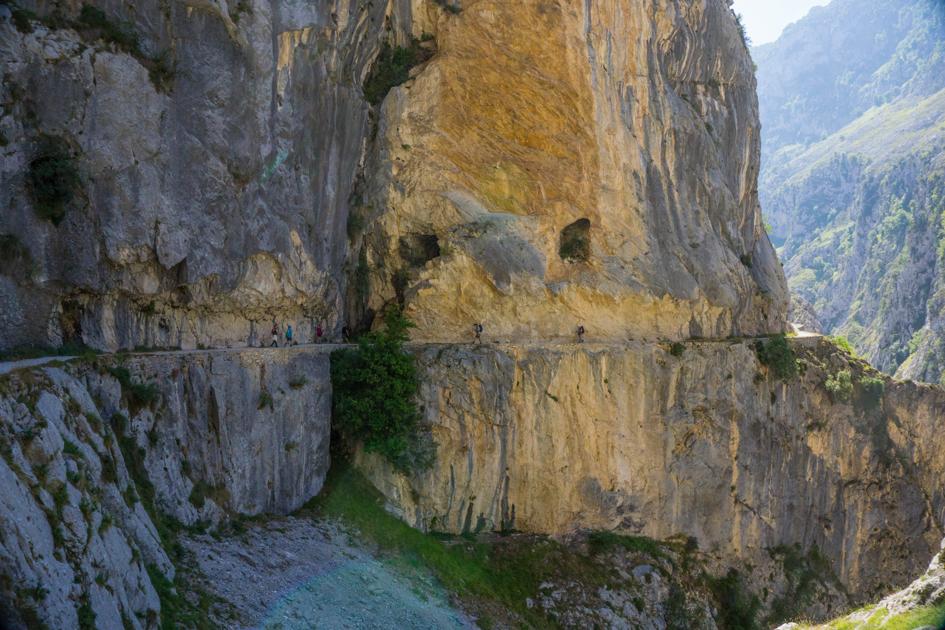 46. Fortunately, the trail is about 6-7 feet wide. Even so, Joan was not thrilled... 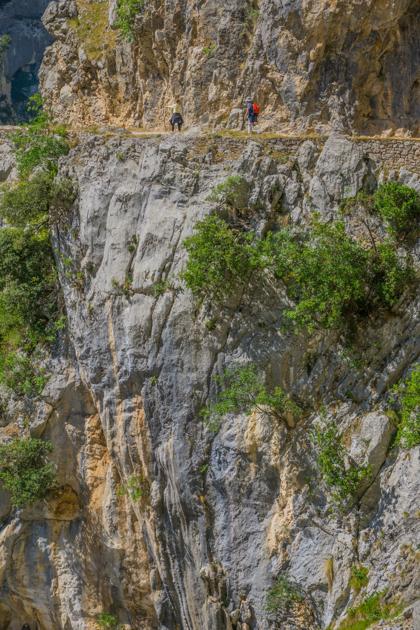 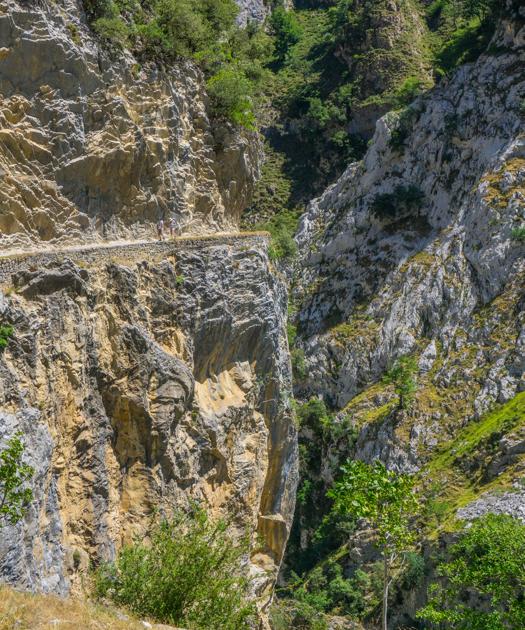 49. Looking across the chasm 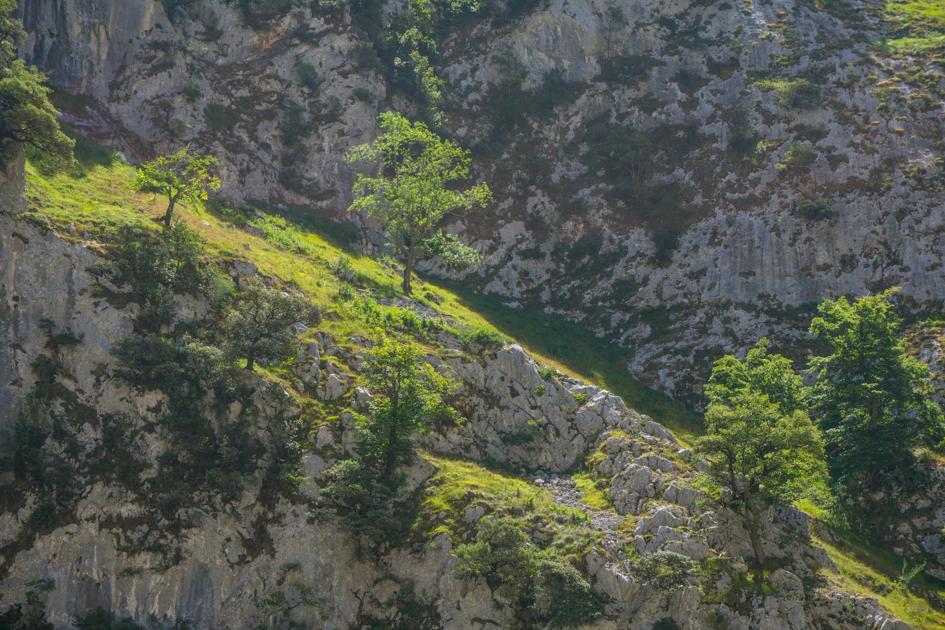 50. some things are the same everywhere 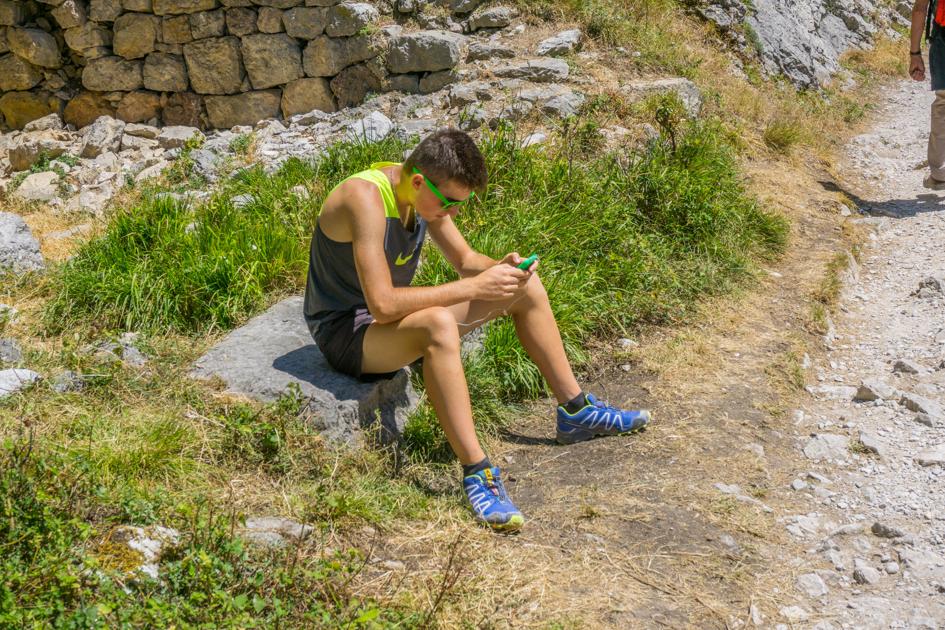 51. 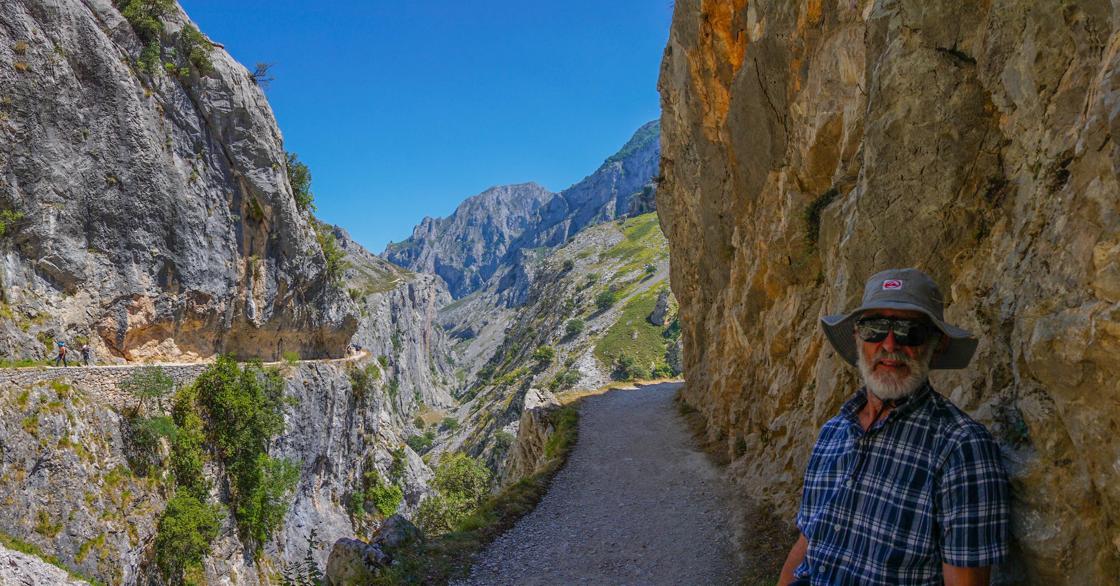 52. Backpackers 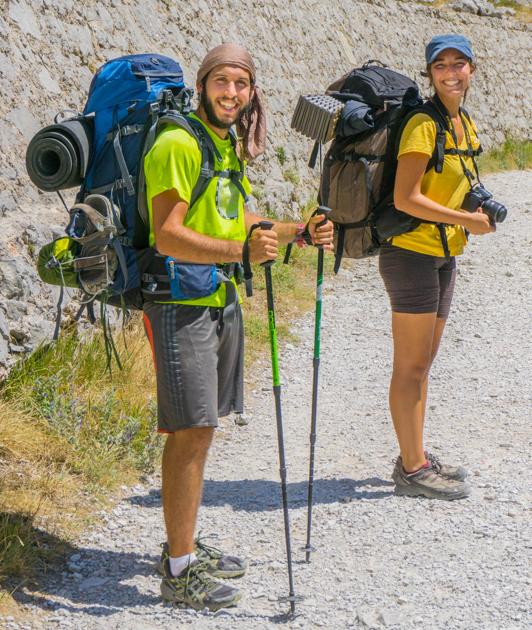 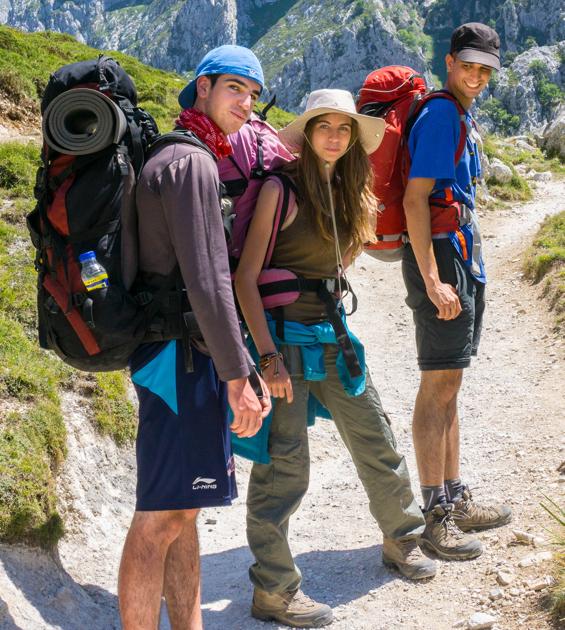 54. Day 3: On the way to the Lake District - Lagos de Covadonga 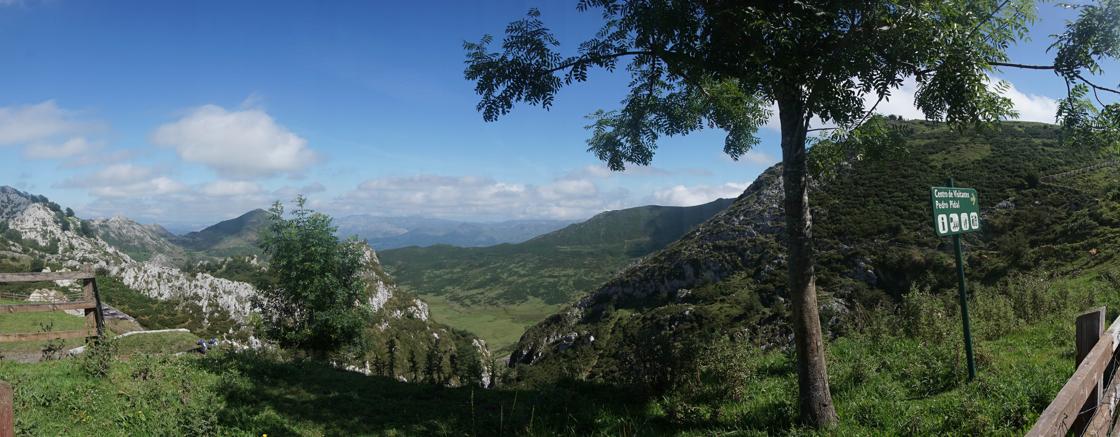 55. We travelled by bus, on steep, winding, narrow roads 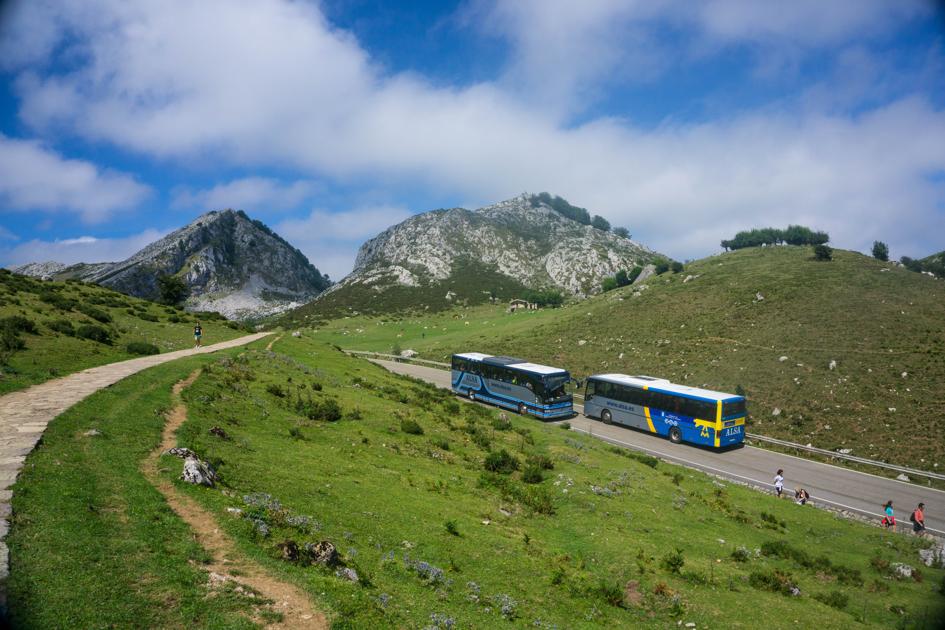 56. The hillsides were covered with a lovely cactus... 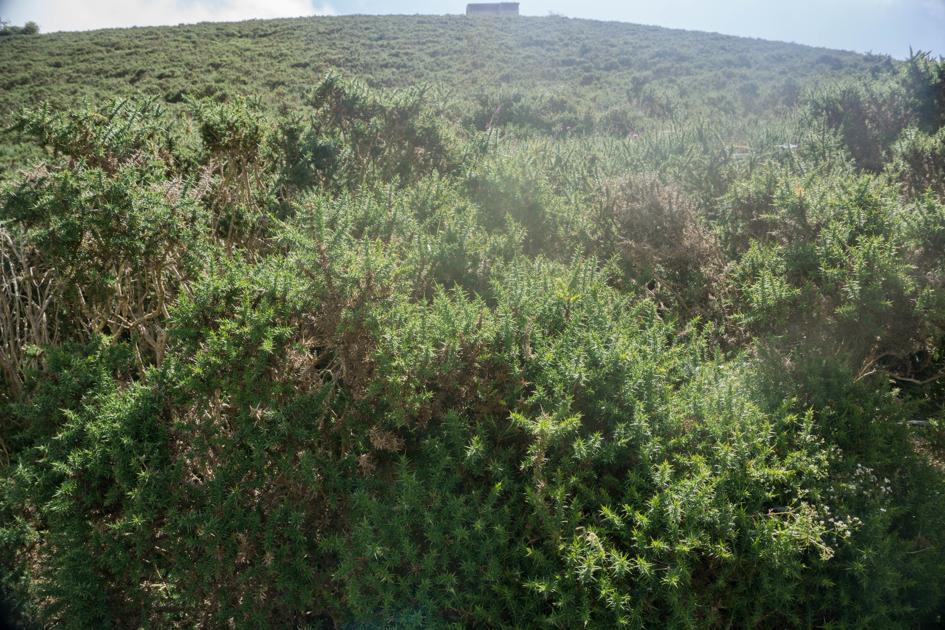 57. ...with vicious spines 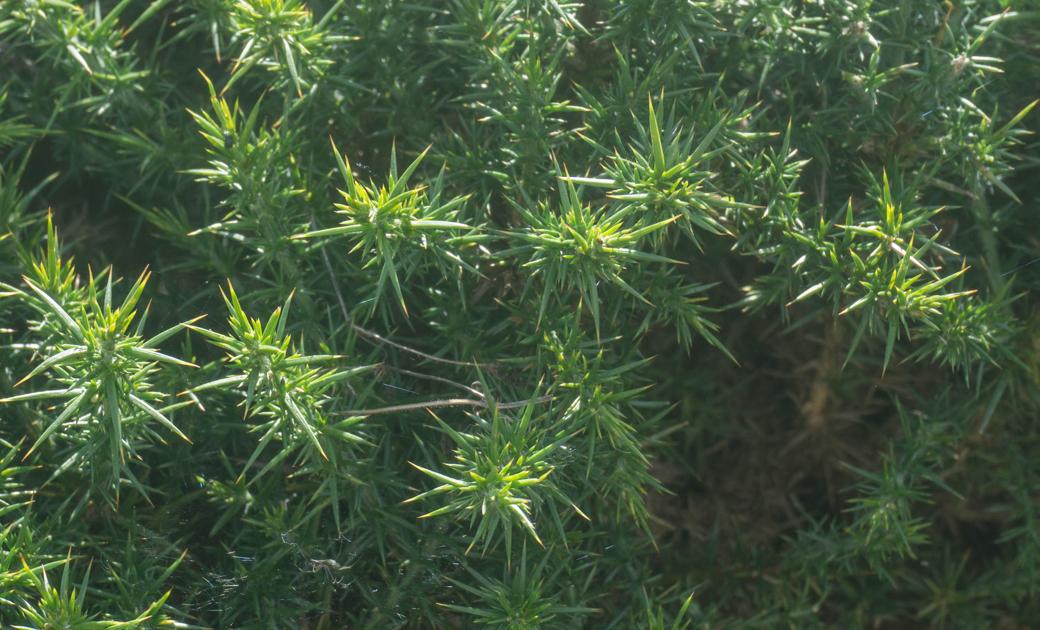 59. At Lake Enol 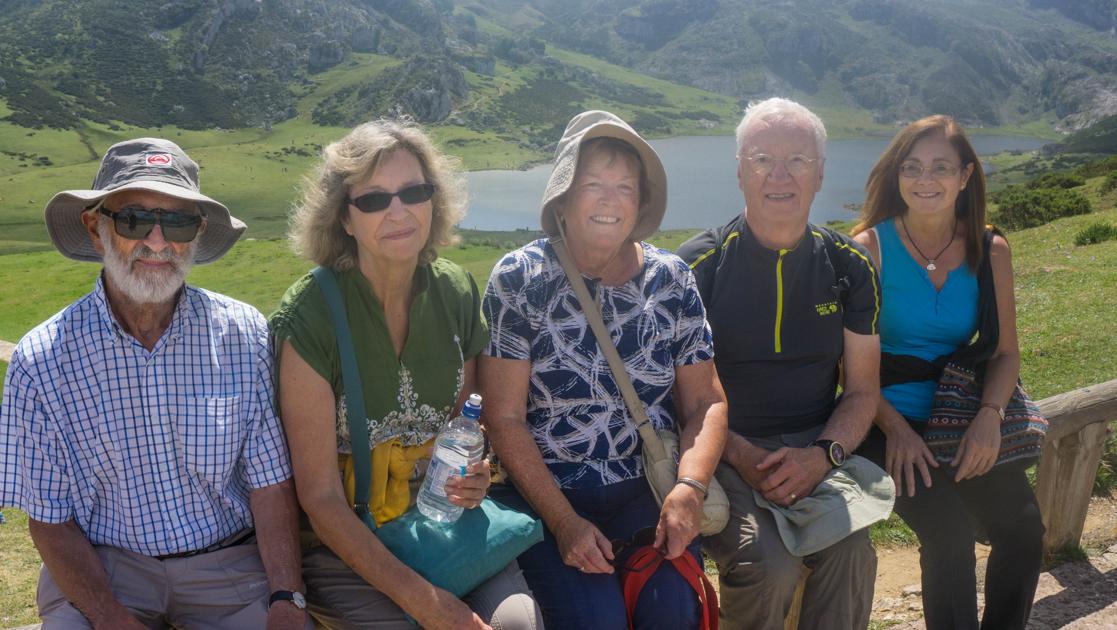 60. Covadonga (L. Cova Dominica = cave of our Lady). Site of the first Christian victory over the Moors, in 722 AD. On the plaza in front of this Cathedrial (built in 1901) is a statue of the famous Pelayo, first King of Spain, who won the battle and started the Reconquest, which took 700 more years to complete 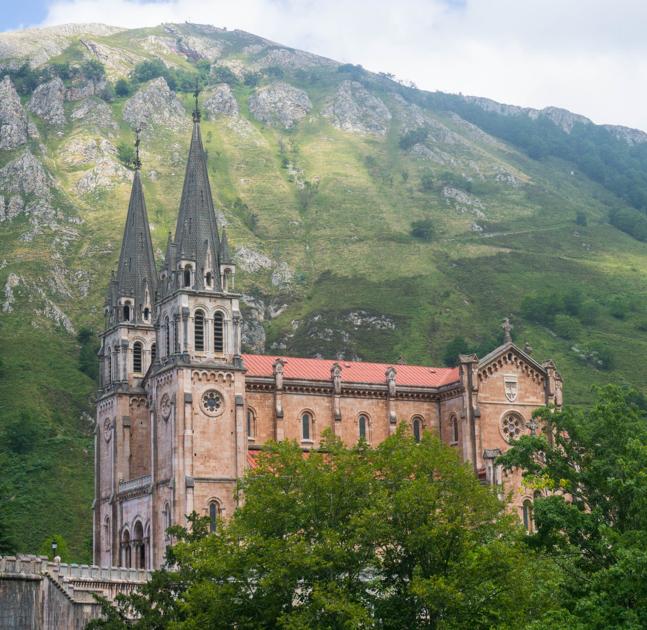 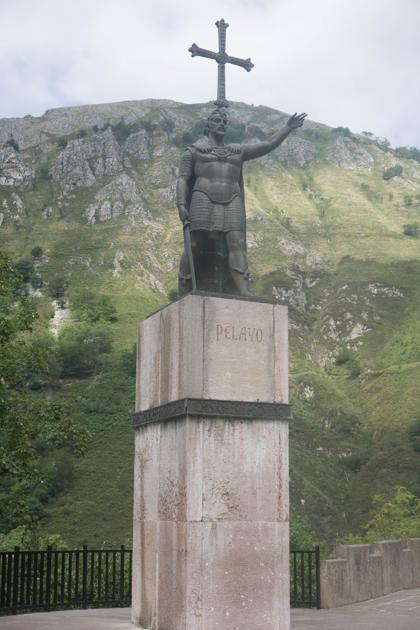 62. Cangás de Onis - Roman (bottom) and medieval (top) bridge 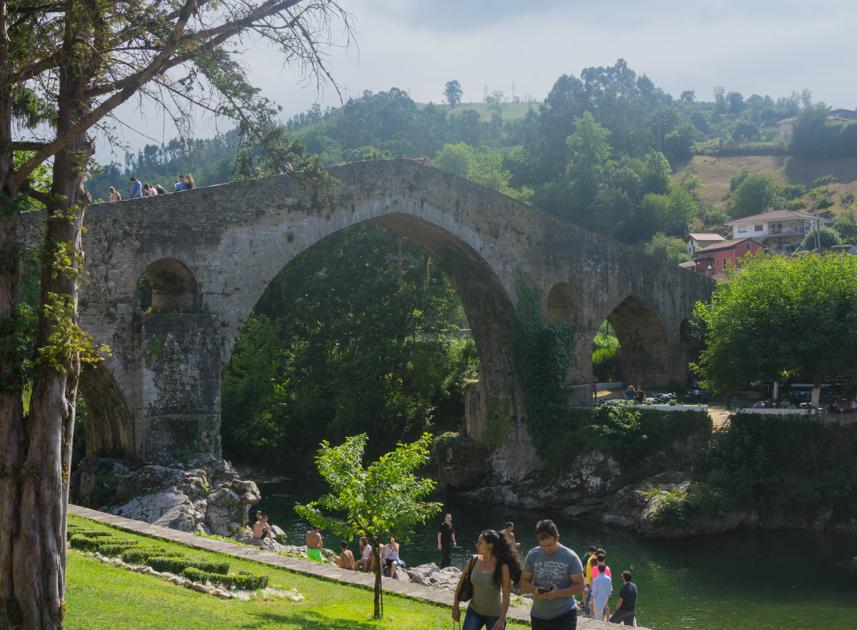 63. a short drive above Poncebol (10 switchbacks) to Camarmeña 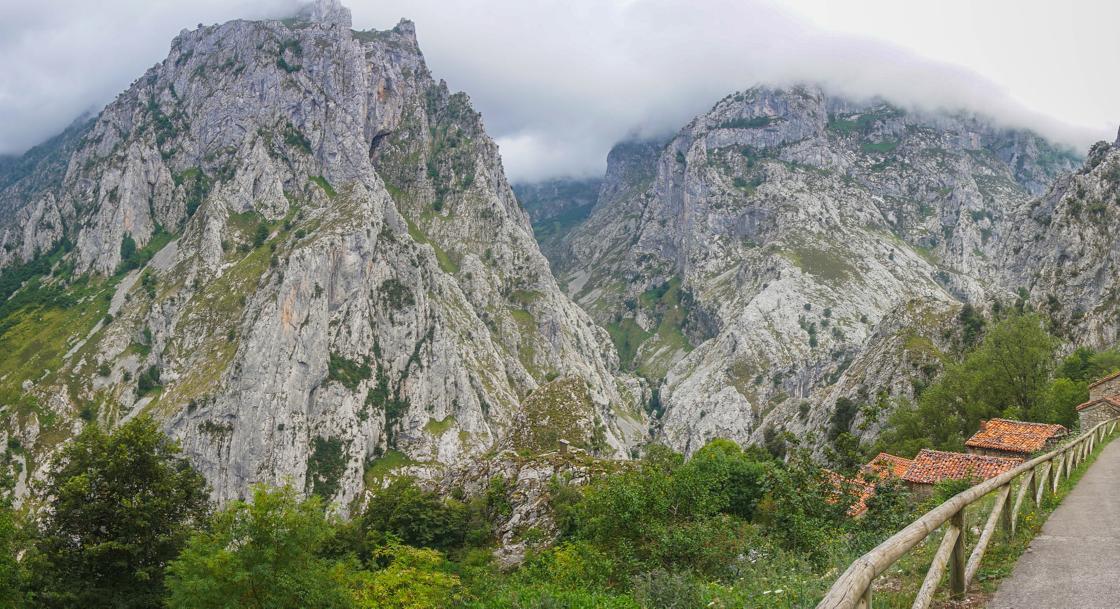 67. 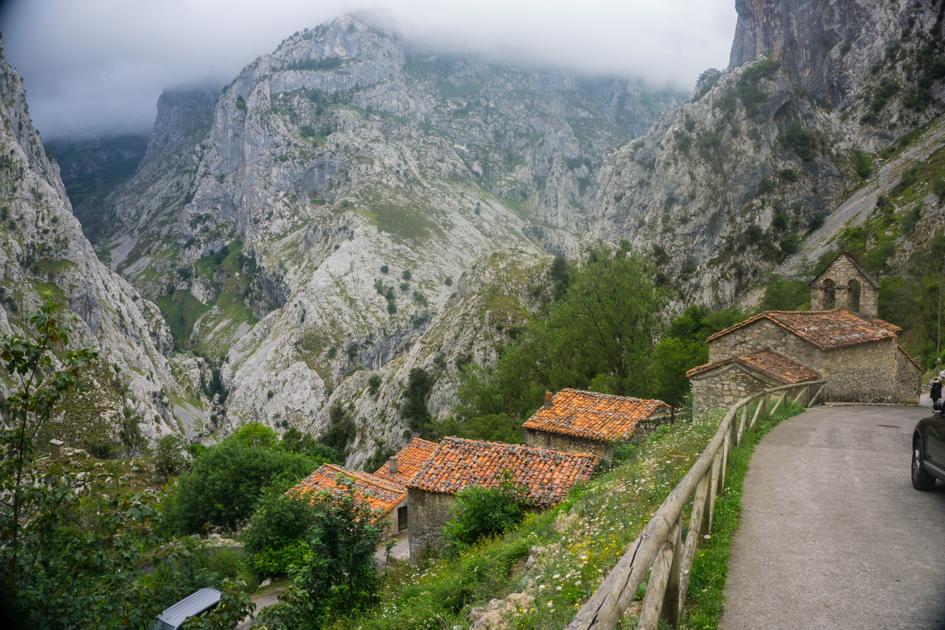 68. Funicular to Bulnes (it climbed about 1200 feet, all underground) 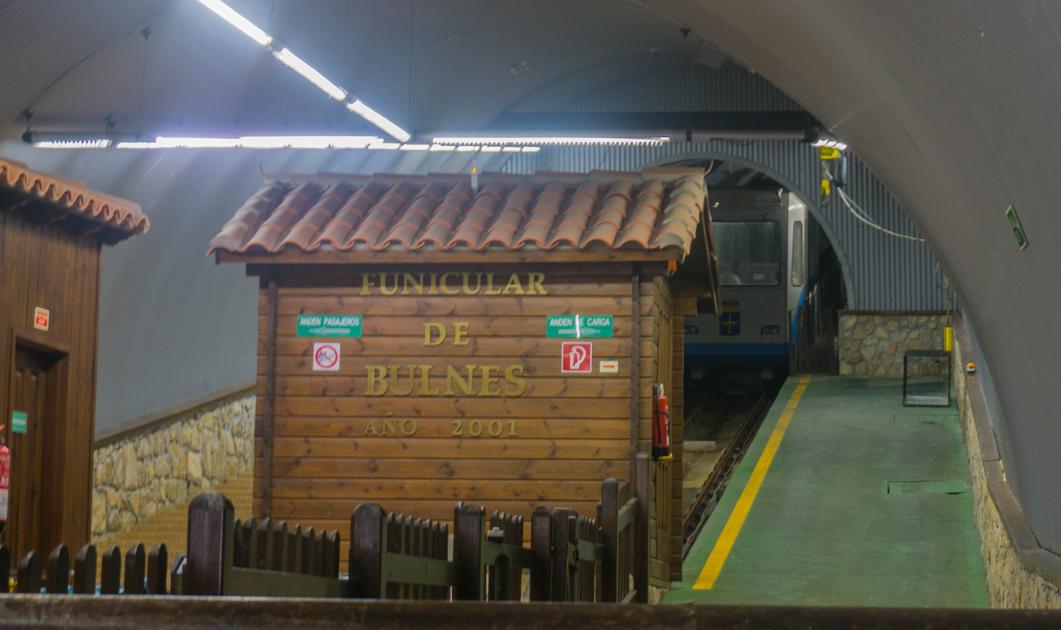 70. Bulnes restaurant where we had lunch 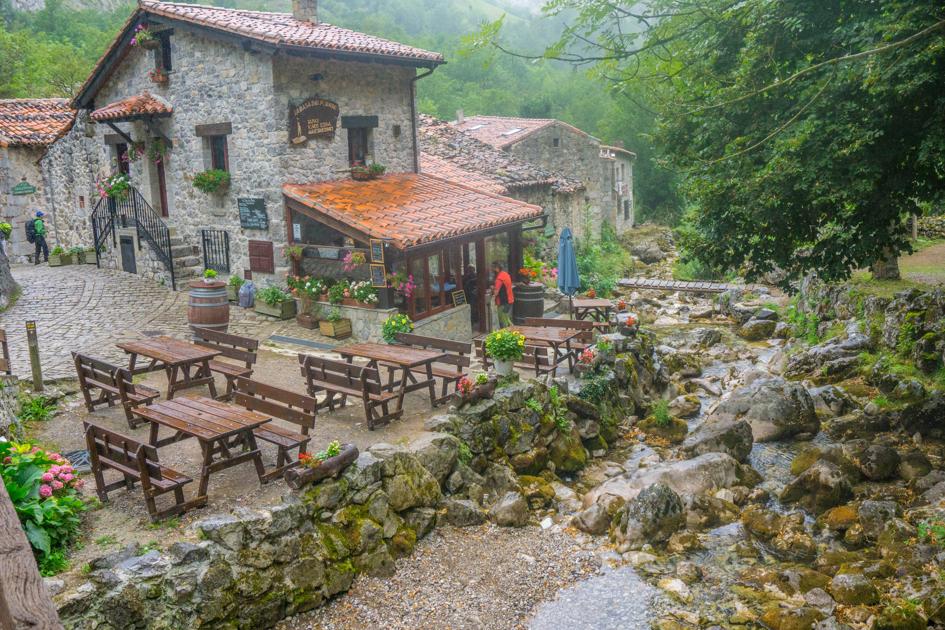 72. Lunch in Bulnes 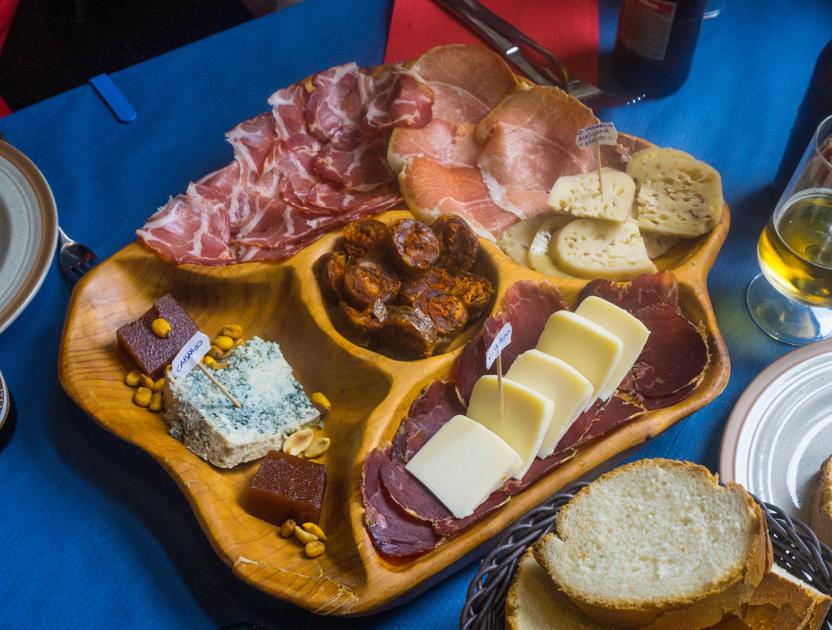 73. It was foggy and raining lightly, so we missed the views 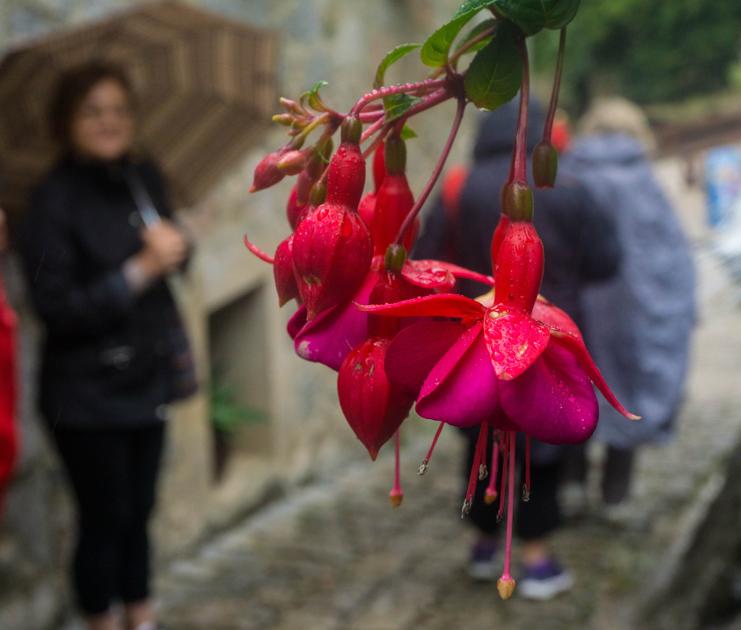 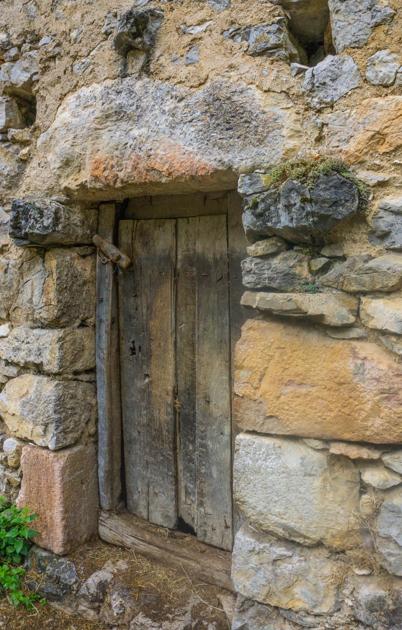 75. 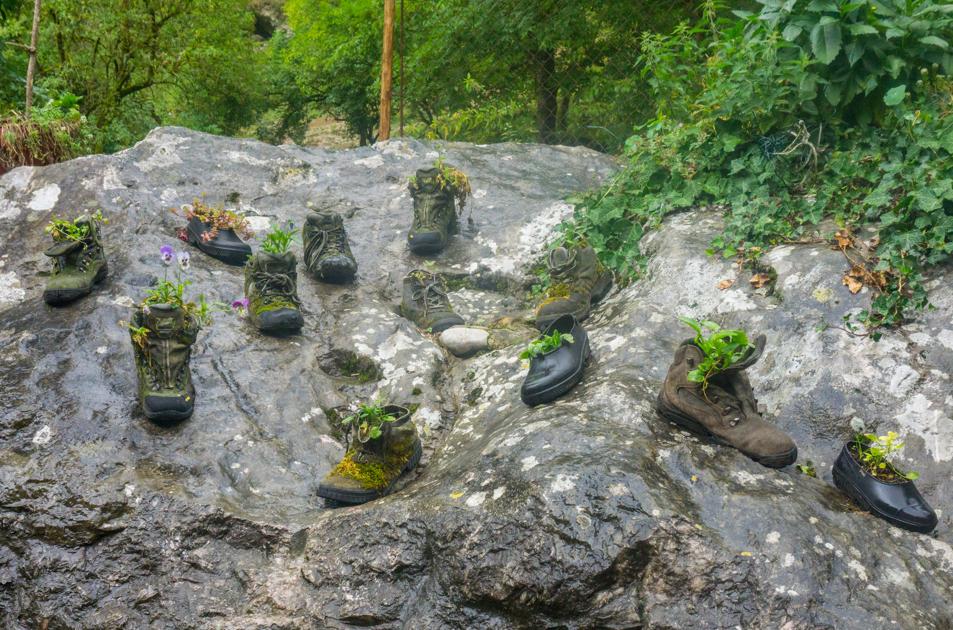 Our trip - to the sea - continues HERE |